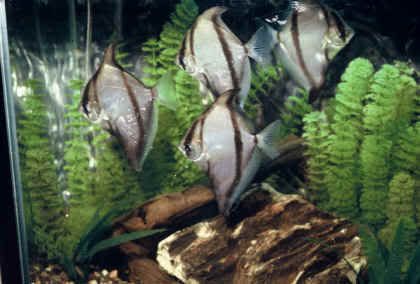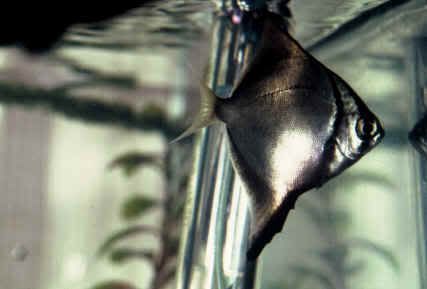tnx bro!!! coming from veterans of aquascaping such as urself dako na kaayo nga encouragement sa first time hobbyists hehehe.
will try to trim it nxt time when i have a water change,
and by the way asa man ta maka kuha o palit ug moss?
my first plan in my tank was just using moss i accidentally and impulsively bought the riccia from boss swordfish without even knowing what it is and how to take care of it.
basta kanang murag carpet mao nana. hahaha
but glad i did.
Results 341 to 350 of 34817
Thread: Aquatic Cebu Enthusiasts (ACE)
-
08-20-2008, 03:04 AM #341
-
08-20-2008, 03:22 AM #342C.I.A.

- Join Date
- Mar 2007
- Gender

- Posts
- 3,081
hahaha im always a newbie.hehehe
moss? naa si alain sa pipers petshop and im not sure sa riverfront. check with master soggy if naa siyay baligya.
riccia fluitans are stunning, labi na if mag bubbles na sila. nindot kaayo..well, with a price to pay. and also attention.ehehe
@dingo spike
Ganahan ko ibutang ni sa atong forum ning imung gipang post...hmm..
-
08-20-2008, 03:22 AM #343
-
08-20-2008, 03:57 AM #344
wala ko kakita ani sa cartimar. didto ni nako napalit sa makati sa bio something na store. ikumusta lang ko leostargolem bro. nabusy man gud ko. ehehehe pareha raba mi trip ato bao. but i have a planted tank too. looking forward to post the pics here when the new setup completes. huwat lang ko sa riccia ug moss mo flourish.
Last edited by potterboy; 08-20-2008 at 04:01 AM.
-
08-20-2008, 06:43 AM #345C.I.A.

- Join Date
- Dec 2007
- Gender

- Posts
- 2,164
@markykoi:
bro,,musta naman ang ACE? murag gpangita nako ani dah coz n PM nagud si allister nako...hehehehe...mauna ni sud ko ani nga thread napud.,well,im very sorry na inactive ko for awhile coz grabe ka busy ako sked nowadays,and if naa man gani ko time maka check sa istorya., sa photography and tattoo thread ko mag cge ug basa2x.
anyway, naa pa raba tawn ko utang sa ACE,
first, dapat na nato e finalize ang logo
second, wa pa gyud ko nakatunga sa meeting pero naa nako mga recruits
pero naa nako mga recruits
well, hatagan nalang tika ug number nako bro so that u can remind me sa mga activities sa ACE and for the logo,tnx
mobile: 0917-6190869
-
08-20-2008, 08:39 AM #346
@marky @ allister :
im always rearding ra, kana online ko.
my tank is doing well rman pd now a days.. mo sulti
nalng ko nnyo tanan, na i have some old hobbys
and new incoming hob pd mao
panagsa ra ko maka hook up sa forum hehe
nya wla pa gyud ko ka attend ug meeting ever..
gi encourage pd ko ni madam piper na mo attend last
meeting nnyo then timing "long ride" mi ato sa cycling
so ni pahulay nalang ko sa balay.
regarding sa logo etc.. mo support pd ko
-
08-20-2008, 10:50 AM #347
-
08-20-2008, 08:04 PM #348C.I.A.

- Join Date
- Mar 2007
- Gender

- Posts
- 3,081
bioresearch? ok ikumusta tika.hehehe mao, magpahimu pud to nako sudlanan, plano siya indian star.
thats good bro. post nya diri. ayo2x.
hahaha gimingaw rami ninyo bro oi.. ok ra oi. gimingaw sad mi sa imung nindot nga mga arowana.
dili na utang oi.hehehe akong younger brother, he is on the process of vectorizing the logo..leostargolem iyang name diri istorya. sunod meeting nalang pud. ayo2x bro.
i see bro. musta na? nice to have you back here. sige bro. salamat kaayo. nangumusta rako.hehehe hope to see you all guys soon. salamat.
-
08-20-2008, 08:12 PM #349C.I.A.

- Join Date
- Dec 2007
- Gender

- Posts
- 2,164
cge bro., if pwede nimo ma share iya design, pwede pud nako mabuhatan ug little twist if naa pa ko pwede ma-eshare...k...naa ko duha ka recruits,ang usa kay hilig ug arowana,ang usa kay breeder ug kois,barb&tetras,pearlscale and superworms...and gahuwat ra tawn sila nako if wen ko makalugar attend sa meeting,heheheheh
-
08-20-2008, 08:24 PM #350C.I.A.

- Join Date
- Mar 2007
- Gender

- Posts
- 3,081
@inkinian
salamat bro. ako lang nya i post ang logo. maayo.. daghan na ta.. ang forum kay ako pa usbon ang look and layout.. actually up na siya pero bati pag nawng. wala may mods pud.hehehe
ang forum kay ako pa usbon ang look and layout.. actually up na siya pero bati pag nawng. wala may mods pud.hehehe
salamat bro. see you soon. =)
Advertisement
Similar Threads |
|




 Reply With Quote
Reply With Quote




